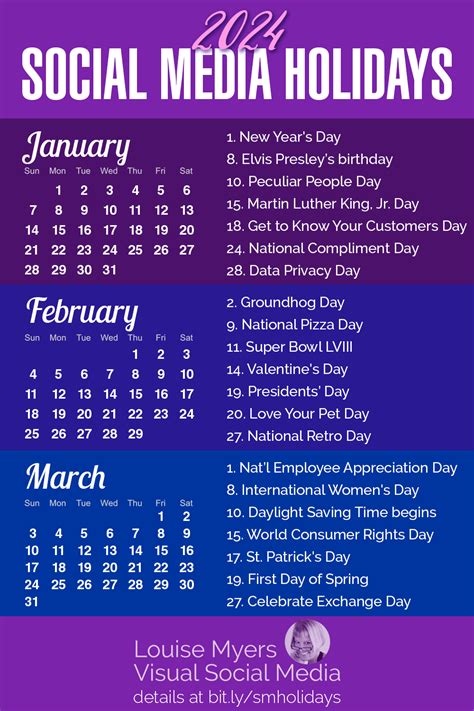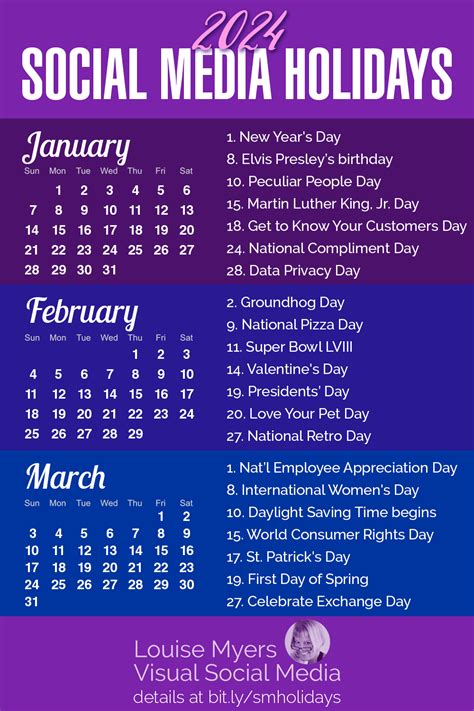Learn how to engage your audience using a social media holiday calendar. Understand interests, develop content strategy, and create engaging visuals. Evaluate engagement and adjust strategies for success.In today’s digital age, social media has become a crucial tool for businesses to connect with their audience. One effective way to keep your audience engaged and interested in your brand is by leveraging holidays and special occasions. By understanding your audience’s interests and behavior, developing a social media content strategy, implementing relevant holiday themes, creating engaging visual content, and encouraging user participation and interaction, you can effectively keep your audience engaged and interested. In this blog post, we will explore how to create a social media holiday calendar that will help you engage your audience and keep them interested in your brand. We will also discuss the importance of evaluating audience engagement and adjusting your strategies to ensure maximum impact. By the end of this post, you will have a clear understanding of how to use a social media holiday calendar to keep your audience engaged and interested in your brand throughout the year.
Understanding the Audience’s Interests
When it comes to understanding the audience’s interests on social media, it’s crucial to take a deep dive into the demographics, behaviors, and preferences of your followers. By analyzing data such as age, location, gender, and online activity, you can gain valuable insights into what topics and content types resonate with your audience. This information can then be used to tailor your social media content to better meet the needs and interests of your followers.
Additionally, conducting surveys and polls on social media can provide direct feedback from your audience about what types of content they enjoy and find valuable. By actively engaging with your followers and encouraging them to share their thoughts and opinions, you can gain a better understanding of their interests and use this information to inform your content strategy.
Furthermore, it’s essential to stay up to date with trending topics and discussions within your industry or niche. By monitoring relevant hashtags, conversations, and news, you can identify popular themes and interests that are capturing the attention of your audience. Incorporating these trending topics into your social media content can help you stay relevant and engage with your audience on subjects that are top of mind for them.
Developing a Social Media Content Strategy
When it comes to developing a social media content strategy, it’s essential to start by understanding your audience’s interests. Take the time to research and analyze the demographics and behaviors of your target audience. By knowing what they are interested in, you can create content that resonates with them and encourages engagement. This will also help you tailor your messaging and tone to better connect with your audience.
After understanding your audience, the next step is to determine the goals of your social media strategy. Whether it’s increasing brand awareness, driving website traffic, or generating leads, your content should align with these objectives. Create a content calendar that outlines the types of content you will post, the frequency, and the platforms you will use. This will ensure consistency and cohesiveness in your messaging, and help you stay organized and focused on your goals.
Visual content plays a crucial role in social media engagement. Whether it’s images, videos, or infographics, incorporating engaging visual content is essential for capturing your audience’s attention. Consider using user-generated content or behind-the-scenes footage to humanize your brand and create a more relatable connection with your followers.
Lastly, it’s important to regularly evaluate audience engagement and adjust your strategies accordingly. Use analytics tools to track the performance of your content, and pay attention to the types of posts that receive the most engagement. By continuously monitoring and refining your content strategy, you can ensure that you are effectively reaching and engaging your audience on social media.
Implementing Relevant Holiday Themes
When it comes to implementing relevant holiday themes into your social media content strategy, it’s important to consider the interests and preferences of your audience. One way to do this is by creating a social media holiday calendar that outlines the various holidays and events throughout the year that are relevant to your target audience. By identifying the holidays that are most important to your audience, you can tailor your content to align with their interests and make your social media posts more engaging and relevant.
Another way to implement relevant holiday themes is by incorporating holiday-related visuals into your social media content. This could include using themed graphics, images, and videos that are related to specific holidays or events. Visual content is incredibly engaging and can help to capture the attention of your audience, so incorporating holiday-themed visuals into your social media posts can be a great way to increase engagement and create a festive atmosphere for your followers.
Creating a social media holiday calendar is a great way to plan and schedule your holiday-themed content in advance. By using a calendar format, you can organize your posts around specific holidays and events, making it easier to keep track of what content you have planned and ensuring that you don’t miss any important opportunities to engage with your audience. This can also help you to create a cohesive and consistent holiday-themed content strategy that aligns with the interests and preferences of your audience.
| Holiday | Date |
|---|---|
| Christmas | December 25th |
| Halloween | October 31st |
| Thanksgiving | November 25th |
By implementing relevant holiday themes into your social media content strategy, you can create a more engaging and festive experience for your audience, which can help to strengthen their connection to your brand and increase their loyalty. By understanding the interests and preferences of your audience and tailoring your content to align with their needs, you can create a holiday-themed social media strategy that is engaging, relevant, and memorable for your followers.
Creating Engaging Visual Content
In today’s fast-paced digital world, capturing the attention of your audience is more challenging than ever. One effective way to engage your audience and make a lasting impression is through visual content. Whether it’s stunning photography, eye-catching graphics, or captivating videos, visual content has the power to convey your brand’s message in a way that resonates with your audience on a deeper level.
When creating visual content, it’s essential to consider the interests and preferences of your target audience. What type of visuals are they most likely to engage with? What colors and styles are appealing to them? By understanding your audience’s preferences, you can tailor your visual content to better resonate with them and capture their attention.
Another key element in creating engaging visual content is to ensure it is relevant and timely. Whether it’s tying your visuals to current events, trends, or holiday themes, staying relevant can provide your audience with fresh and engaging content that keeps them coming back for more.
Furthermore, utilizing user-generated content such as customer testimonials, reviews, and photos can add authenticity and credibility to your visual content. Encouraging your audience to participate and interact by sharing their own experiences with your brand can create a sense of community and further engage your audience.
Encouraging User Participation and Interaction
Engaging your audience on social media is crucial for building a strong online presence and fostering a loyal community. One effective way to achieve this is by encouraging user participation and interaction. When your audience feels heard and valued, they are more likely to engage with your brand and become loyal followers.
One way to encourage user participation is by creating interactive polls and Q&A sessions on social media platforms such as Instagram and Facebook. By asking for their opinions and feedback, you show your audience that their thoughts and preferences matter, which can lead to higher engagement and participation.
Another effective strategy to promote user interaction is by hosting live events such as webinars, Q&A sessions, and live product demonstrations. By going live, you can directly interact with your audience in real-time, answer their questions, and address their concerns, which can result in a more personal and engaging experience for your followers.
Furthermore, creating user-generated content campaigns can also promote interaction and participation. Encourage your audience to share their own photos, videos, and experiences related to your brand, and feature their content on your social media channels. This not only increases engagement but also builds a sense of community and belonging among your followers.
Evaluating Audience Engagement and Adjusting Strategies
Evaluating Audience Engagement and Adjusting Strategies
When it comes to evaluating audience engagement, it’s essential to look at various metrics to determine how well your social media content is resonating with your followers. This can include analyzing the number of likes, comments, shares, and click-through rates on your posts. These metrics will give you a better understanding of what type of content your audience finds most engaging, allowing you to adjust your social media strategy accordingly.
Additionally, it’s important to pay attention to the demographics and interests of your audience. By using tools such as Facebook Insights or Twitter Analytics, you can gain valuable insights into the age, gender, location, and interests of your followers. This information will help you tailor your content to better meet the needs and preferences of your audience, ultimately driving higher engagement levels.
Another important aspect of evaluating audience engagement is monitoring the effectiveness of your social media advertising efforts. By analyzing the performance of your paid campaigns, you can gain a better understanding of which ads are resonating with your audience and driving the most engagement. This will enable you to optimize your advertising strategy and allocate your budget more effectively to reach and engage a larger audience.
Frequently Asked Questions
What is a Social Media Holiday Calendar?
A social media holiday calendar is a schedule of special days, holidays, and events that are relevant to your target audience and can be used for social media content planning.
Why is it important to use a Social Media Holiday Calendar?
Using a social media holiday calendar helps to keep your content relevant, engaging, and timely. It also allows you to tap into trending topics and connect with your audience on a more personal level.
How can a Social Media Holiday Calendar help in engaging your audience?
By leveraging special days and events, you can create content that resonates with your audience’s interests and emotions, leading to higher engagement, shares, and interactions.
What are some popular social media holidays and events to include in a calendar?
Examples of popular social media holidays and events include World Environment Day, International Women’s Day, National Pet Day, and many more. It’s important to choose the ones most relevant to your audience.
How far in advance should I plan my social media content using a Holiday Calendar?
Ideally, you should plan your content at least one month in advance to allow for ample time to create and schedule engaging posts for each holiday or event.
Should I customize the content for each holiday on the calendar?
Yes, it’s important to customize your content for each holiday to make it more personal and relevant to your audience. Utilize holiday-themed imagery, hashtags, and messaging to maximize engagement.
Where can I find a Social Media Holiday Calendar to use for my content planning?
There are several websites and tools available online that provide a complete list of social media holidays and events for the year. You can also create your own based on your audience’s interests and preferences.


